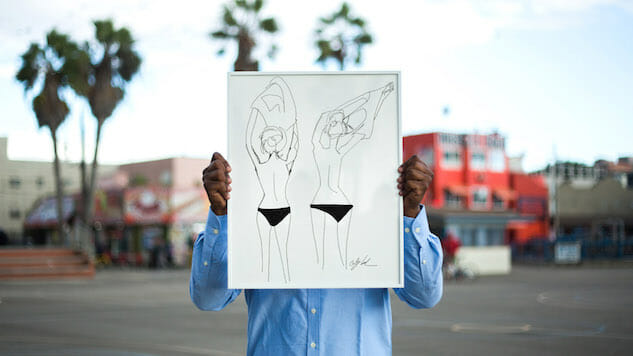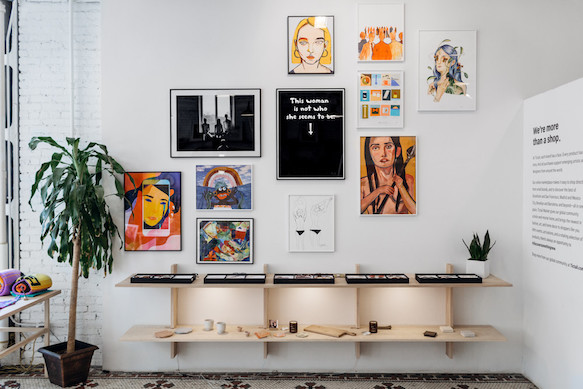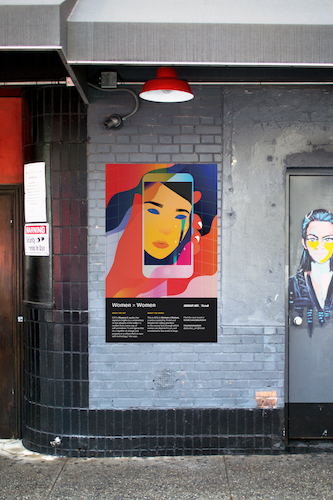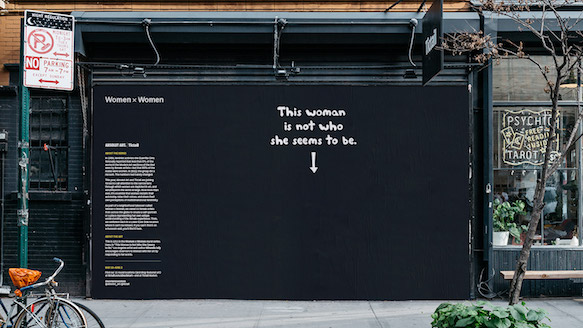Women X Women Responds to Art World’s Age Old “Woman Problem”
Photo courtesy of Absolut Art
It’s been nearly three decades since the anonymous female artist collective and activist group Guerilla Girls asked the world: “Do women have to be naked to get into the Met Museum?” adding their then novel finding that “less than 5% of the artists in the Modern Art sections of museums are women, but 85% of the nudes are female.” The Guerilla Girls, who assume the identities of prominent dead female artists while sporting guerilla masks, have since been on a crusade to not only increase female representation in art institutions, but also to open the conversation to the limited lens through which women have been customarily (albeit indecently) depicted in art throughout history.
These once provocative findings are now the very ideology behind a new female-forward collaboration between social marketplace Tictail, an e-commerce platform and permanent Lower East Side storefront dedicated to the promotion of emerging artists and designers, and online retailer Absolut Art, which brings museum-quality works from evolving international art scenes to a sustainable and accessible global online market. Women X Women is a new public art initiative seeking to challenge these massive discrepancies in gender representation through eleven Lower East Side installations. Whether affixed to Irving Farm Coffee Roasters’ shop window or purposefully half-shrouded in the local vegetation outside neighborhood Vietnamese spot An Choi, each projected image is an artist’s response to her own unique understanding of the female experience, specifically as it relates to her own lived setbacks and qualms with women’s portrayal in art.
 Photo courtesy of Tictail, Raleigh Norris
Photo courtesy of Tictail, Raleigh Norris
“At Absolut Art, our mission is to connect people with dynamic artists from around the world – one of the best parts of this job is the ability to provide a platform for fresh female voices. In our opinion, the problem isn’t that diversity of thought doesn’t exist in the art world, but rather that it’s rarely given the microphone it deserves,” says CEO and cofounder of Absolut Art, Nahema Mehta, and she’s not wrong. In a 2015 interview with New York Times culture reporter, Melena Ryzik, Guerilla Girl Frida Kahlo, regarding the art world’s long-documented woman and minority problem, remarked “How can you really tell the story of a culture when you don’t include all the voices within the culture? Otherwise, it’s just the history, and the story, of power.”
The history and the story of power—it’s one that certainly looks male—and white—especially when considering the history of art. But with Women X Women, the curatorial minds of Tictail and Absolut Art are positioning female artists to reclaim the history of both art and power. One example is Elise Peterson’s “Mammy Wata,” which reclaims a traditionally derogatory term aimed at black nursemaids or nannies who cared for white children during a time when slavery held prominence in the old American South. Considered one of the most well known and enduring racial caricatures of African American women, the character of the “mammy,” generally depicting a wide grin and loyal servitude, was once used as propaganda to convey that black women were happy as slaves. By reclaiming such an archetype, Peterson also reclaims the female Black American experience.
-

-

-

-

-

-

-

-

-

-

-

-

-

-

-

-

-

-

-

-

-

-

-

-

-

-

-

-

-

-

-

-

-

-

-

-

-

-

-

-

 Photo courtesy of Tictail, Raleigh Norris
Photo courtesy of Tictail, Raleigh Norris Photo courtesy of Tictail, Raleigh Norris
Photo courtesy of Tictail, Raleigh Norris






































